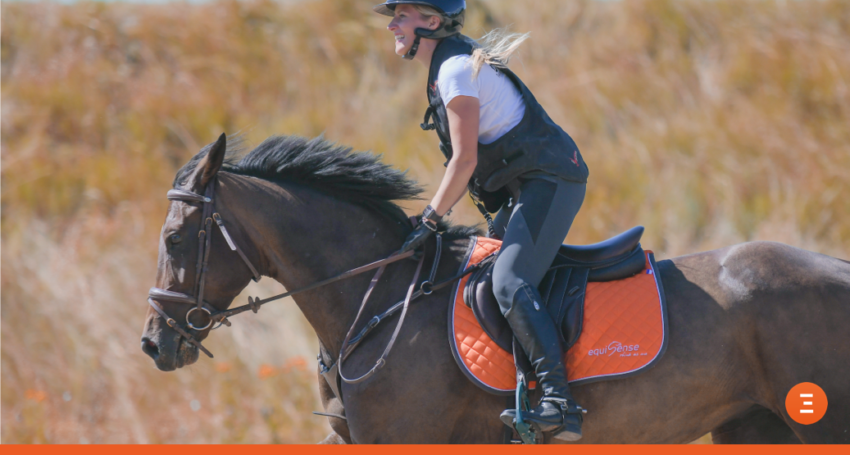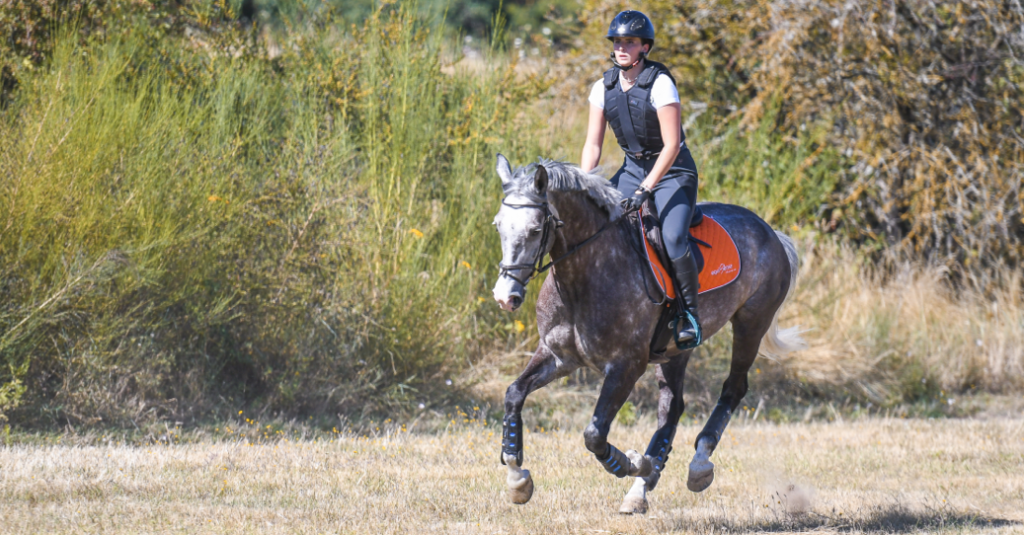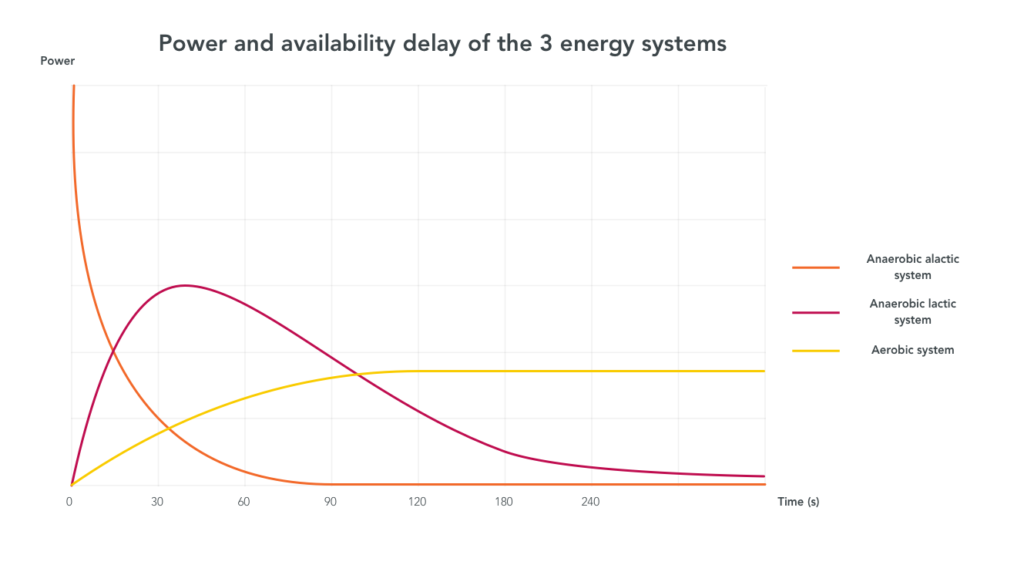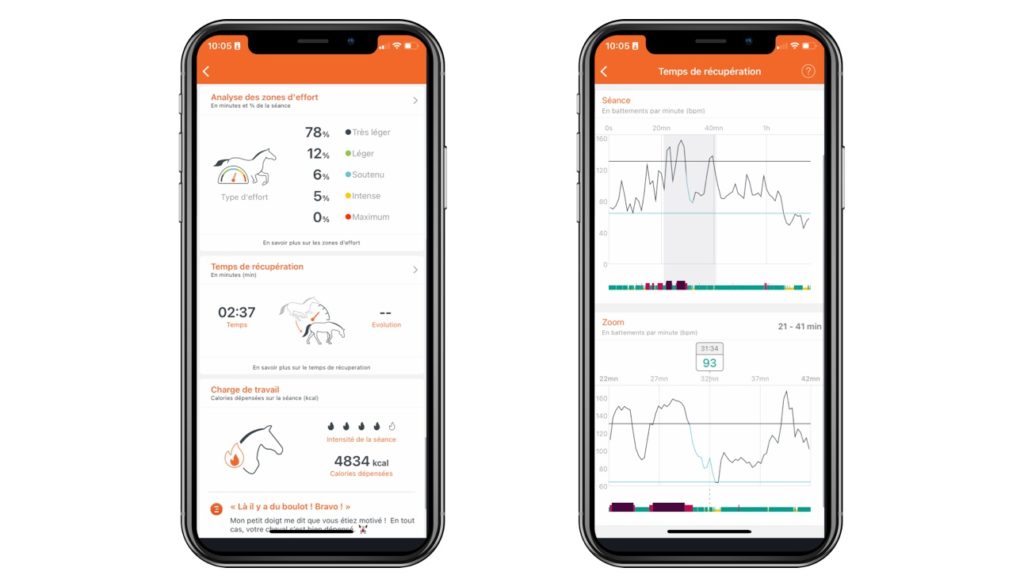
Recovery after an effort: Here’s how it works
How to get your horse to recover quickly after work? Walk? Trot? For how long? And why are we doing it? What’s the point? Let me tell you everything on the horse’s active recovery ⏩

Table des matières
What happens in your horse’s body during an effort?
To fully understand how recovery after an effort works, you have to understand what happens during the effort. So let’s talk about those muscles and how they function.
The 3 energy systems
Muscles need energy to function. They need “fuel”. The difference the horse has with a car, it’s that the body creates itself the fuel it needs. Ecofriendly, isn’t it?
The body uses the sugars, fats or proteins found in the horse’s food. The way the body creates this fuel depends on the type of effort the horse went through. These different ways to create the fuel are called the “energy systems” and there are 3 of them:
- The anaerobic alactic system: It involves very brief and intense efforts, like jumps or the first seconds of a race. It uses the (very limited) available fuel reserves in the muscle cells. The waste it produces will help replenish the fuel reserves. It doesn’t use oxygen (hence the expression “anaerobic”).
- The anaerobic lactic system: It involves efforts requiring a high power on relatively short efforts (max. 2 minutes). This system doesn’t use oxygen either but it produces a very important waste: lactic acid. We’ll get back to it later.
- The aerobic system: It involves long efforts, uses oxygen and produces water and CO2 as waste (sweat and heavy breathing).
To sum it up:
| Anaerobic alactic | Anaerobic lactic | Aerobic | |
| Availability delay | Immediate | ~20s | ~2min |
| Power | High | Medium | Low |
| Effort type | Short and intense | Rather short and pretty intense | Long and not as intense |
| Waste created | Creating and Phosphate | Lactic Acid | H2O et CO2 |
Lactic acid, or lactates
Let’s stop for a minute and talk about lactic acid, also known as lactates.
In fact, it’s the anaerobic lactic system’s waste. When we use the anaerobic lactic system, the lactates created will be stored in a first time in the muscle cells. The body will try to use as much as it can the created lactates. Yes, the body is a formidable machine based on the circular economy principle. 🔄 So when we quickly go through the aerobic system for example, the body uses the lactates created beforehand.
However, when the effort is too intense, the lactates pile up and go in the blood flow. And that’s exactly what “causes problems”! How to contain the damage? Recovery!
(Interesting fact: lactic acid is also what causes the milk to curdle)

Practical example: A race or a cross country course
The first 10 seconds will involve the anaerobic alactic system. The athlete (horse or man) will deplete the meager fuel reserves stored in its muscles.
📚 Learn more: 7 Must Know about Your Horse’s Muscles
Then it’s time for the anaerobic lactic system which will take over for a few minutes. But this will produce lactic acid very quickly.
If you run, you’ve probably noticed that after a few minutes you get really tired: it’s the delay before the aerobic system kicks in.
Once the athlete is installed in a steady speed, the aerobic system starts working and makes the body sweat and breathe heavily. If the speed isn’t too high for the athlete, the body will degrade the lactic acid contained in the muscle cells and rejuvenate its fuel cells. In this case, the race can last longer (for instance in endurance races).
📚 Learn more: 6 Must Know Aspects about the Horse Respiratory System

However, if the speed is too high OR during the final sprint, the anaerobic lactic system will come and supplement the aerobic system with this disadvantage of producing lactic acid.
This way the body can’t degrade the lactates because there’s too much of them and it becomes a hinder to the race. The athlete has to slow down, they can’t keep up the rhythm.
The consequences of an excess of lactic acid in the organism are numerous: cramps, muscle pain, low blood pressure, heavy fatigue, dehydration, etc. A well-thought active recovery after the effort is then important…

What is the training for, then?
The effects of training will be allowing the body to tolerate the presence of lactates and to use it better! The aerobic system will be much more efficient and will allow the lactate levels to go down quicker. Training allows your horse to last longer, and faster!
1st recovery type after the horse produces an effort: active recovery
La récupération active consiste à faire un effort aérobie (d’endurance) pour permettre au cheval de mieux récupérer du gros effort qu’il a fait juste avant. Concrètement, quand on vous dit de trotter après votre cross, c’est de la récupération active.
Active recovery involves an aerobic effort (endurance) to allow the horse to recover from the big effort it did just before. When someone tells you to trot after your cross country course, it’s active recovery.
What’s the point?
As its name implies, it’s used to recover.
It will induce several things:
- the time the horse takes to regain a resting heart rate will be shorter
- the time it takes for the horse to regain a resting respiratory rate will be shorter
- the body temperature goes down quicker
- replenish the energy reserves
- eliminate the lactic acid stored
📚 Learn more: 5 Reasons to Use a Heart-Rate Monitor with Your Horse
When is the active recovery useful? ⏱
Active recovery is more suited to intense but relatively short efforts. Typically, a cross country course or an interval canter training. In short, when the horse accumulates lactates. The point is to help the horse’s body consume the lactates quicker and lower its levels.
It’s a bit odd to say to someone they have to do another effort to recover from an effort, I know. But as I explained earlier, by maintaining the effort at a lower tier (slower), the organs responsible for consuming the lactic acid will be irrigated better. This way they can get the lactic acid quicker to degrade it. These organs are the muscles, the heart, the liver, the kidneys and the brain.
If however you stop right after you finish the course, the lactic acid will stay in the muscles. And you’re guaranteed to get low blood pressure and cramps!! Not the best for the jumping part the next day…
What’s a good active recovery?
A good active recovery for a horse consists in going at trot for 5 to 15 minutes max slowly immediately after the effort. (Yes, 15 minutes, that’s very long). For the entire duration of the active recovery, let your horse decide how fast it wants to trot, and keep your reins loose. Be careful, a deferred active recovery loses all purpose. 10 minutes after the effort is done is already too late! [1]
When there is active recovery, it has to be immediately after the effort is over.

2nd recovery type after the horse produces an effort: passive recovery
Passive recovery consists in doing nothing (complete stop or walking) so your horse can recover after an effort.
It’s good in cases of a low intensity effort or a slow endurance effort which won’t produce lactic acid. In which case walking for a few minutes before going back to the stall is enough!

Measure the recovery time with Equisense Motion Sport!
As I explained earlier, recovery aims to help the horse recover a resting heart rate. As you train, the recovery time should become shorter and shorter, your horse managing to regain a lower heart rate quicker.
Now with Equisense Motion S, our new product which incorporates a heart rate monitor for your horse, you can figure out how long your horse takes to recover after an effort! The measure is automatic and allows you to figure out which recovery type is the best for your horse!

See you soon for another article,
Camille Saute,
R&D at Equisense